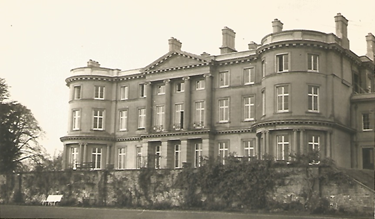Faith tourism, faith in tourism - Professor Maddy Gray
In recent years, heritage tourism has been one of the few
growth areas in the Welsh economy – and a lot of it revolves round the heritage
of religion and belief. From Neolithic burial mounds to nineteenth-century
chapels, faith tourism is part of the stock in trade. The Welsh Government
recognised this back in 2013 when the Faith Tourism Action Plan was launched. Unfortunately
– as so often happens – once we had the strategic planning document in place,
it all went a bit quiet. The plan was (and I quote from the document) that
'By 2020 Faith Tourism is
recognised as an integral component of the visitor experience in Wales, adding
significant value to the destination offer, contributing to the well-being of
the visitor and host community and enhancing local, regional and national
‘Sense of Place’
Has this happened? – well, not really. That is not to say that
we haven’t had a huge number of heritage projects that are all or in part about
faith tourism – the North Wales Pilgrim’s Way, the Ancient Connections project
working on links between SW Wales and SE Ireland, the Marian Way trying to
conserve the ruined church at Chapel Hill, the Village Alive Trust in north
Monmouthshire, my own Cistercian Way, and many many more. But there hasn’t been
any sense of co-ordination, and sometimes different projects are working on the
same stories but not aware of each other’s existence. There is also a need to
widen the scope of faith tourism to include all faiths: we aren’t just
interested in medieval churches and abbeys.
Chris Catling, Secretary of the Royal Commission on the
Ancient and Historical Monuments of Wales, also chairs the Welsh Historic
Places of Worship Forum. He has been increasingly aware of this need for
connection and co-operation. Working with John Winton, who used to head the
Churches Tourism Network for Wales, and with some crucial financial support from
the University of South Wales, we were planning to establish a network, to be
launched with a big symposium on – wait for it – 6 April. We had international
keynote speakers, Visit Wales talking about resources, examples of successful
projects from Wales and elsewhere, work-shopping sessions ... we had well over 100 delegates booked in, from
a range of faith communities ...
Well, that didn’t happen. What we are doing now is to use
the delegates’ list to try to establish a network online so that we can share
ideas. We plan to rearrange the symposium, possibly in the autumn, and we hope that
by then we will be better informed and able to develop the network further.
The elephant in the room is, of course, the future of the
whole tourist industry. Even if we could ever get back to travelling as freely
as we used to, is this something we should do? Knowing as we do how much damage
travel does to the environment, should we be encouraging people to fly to Wales
and drive around when they get here? Faith tourism, though, can be part of
‘slow tourism’. Properly done, it encourages people to engage with local
communities and their history. Walking and backpacking holidays are
particularly good for the local economy. If you are on foot or on a bike, you
have to shop locally, and you will probably stay in locally owned accommodation. Walking
pilgrimages are not for everyone, but walking just a bit of a pilgrimage route can
be a moving and rewarding experience. Most churches are nowadays wheelchair
accessible and there are accessible sections of a lot of the pilgrimage routes.
We know there is a lot more to do in this. We do feel, though, that this is the
kind of tourism we need to be encouraging in the future.
Professor Maddy Gray
Editor's comment











